Table of Contents
- 1. How to Understand Lens Contamination
- 2. Steps for Effective Lens Cleaning
- 3. Restoring a Welding Helmet Lens
- 4. Tips for Sustained Lens Cleanliness
- 5. Best Practices for Lens Cleaning
- 6. Essential Tools and Equipment for Cleaning
- Conclusion
- FAQs about How to clean a welding helmet lens
- How often should I clean my welding helmet lens?
- Can I use household cleaners to clean my welding helmet lens?
- Can I clean an auto-darkening welding helmet the same way as a passive helmet?
- How should I store my welding helmet to keep the lens clean?
- What should I do if my lens gets scratched during cleaning?
Ensuring clear vision while welding is crucial for safety and precision. A clean welding helmet lens is your window to a successful weld. In this article, discover comprehensive steps, effective restoration methods, and essential tips to maintain and restore your welding helmet lens. Master the art of clarity in your welding projects.
1. How to Understand Lens Contamination
Causes of Lens Dirt Accumulation
Welding environments are notorious for debris, splatter, and fumes, leading to lens contamination. Factors such as welding material composition, work environment conditions, and welding techniques contribute to this buildup. Metal particles, spatter, and residue from fluxes can quickly obscure the lens, affecting visibility and safety.
Impact of Contamination on Visibility
A dirty lens not only obstructs vision but also poses safety risks. Reduced visibility can lead to imprecise welding, potentially compromising the quality of welds and overall project outcomes. Additionally, prolonged exposure to a contaminated lens might strain the eyes, causing discomfort and fatigue.
Understanding the sources of contamination and their repercussions is fundamental. By recognizing these factors, you can implement effective cleaning strategies to maintain optimal clarity and safety while welding.
2. Steps for Effective Lens Cleaning
Initial Preparations for Cleaning
Before diving into the cleaning process, it’s essential to prepare the necessary materials and ensure a safe environment. Gather lint-free cloths, mild detergent, water, soft brushes, and specific cleaning solutions suitable for your lens material. Ensure proper ventilation in the workspace to avoid inhaling fumes during the cleaning process.
Cleaning Methods for Different Lens Types
- Using Water for Initial Cleaning Start by rinsing the lens under lukewarm water to remove loose debris and particles. Avoid using hot water, as it may cause thermal stress on some lens materials. Gently wipe the lens with a soft cloth to eliminate any remaining dirt without scratching the surface.
- Final Polishing Techniques Consider using a specialized lens cleaning solution or a mild detergent mixed with water for a thorough clean. Apply the solution using a clean, soft cloth, making gentle circular motions to remove stubborn residue. Rinse the lens again and pat it dry with a lint-free cloth to avoid water spots.
- Maintenance of Auto-Darkening Filters For welding helmets with auto-darkening filters, follow the manufacturer’s guidelines for cleaning. Typically, using compressed air or a soft brush to remove dust and dirt from the sensors and lenses is recommended.
- Cleaning Inside the Helmet Don’t overlook the interior of the helmet. Wipe down the interior surface with a damp cloth to remove sweat, dust, or any buildup that might impair vision or cause discomfort during use.
5. Specific Care for Specialty Lenses
- Gold Welding Helmet Lens: If you’re dealing with a gold welding lens, adhere strictly to the manufacturer’s guidelines. Specialized materials require unique cleaning techniques to maintain their properties without damage.
- Polycarbonate or specialty lenses: These lenses often need extra care. Use designated cleaning solutions or mild soaps to avoid scratching or degrading the lens material.
- Avoiding Abrasive Materials
- Avoid Paper Towels or Tissues: These materials can leave lint or scratch the lens due to their abrasive nature.
- Avoid Harsh Chemicals: Chemicals or cleaners with strong solvents can deteriorate the lens material, affecting its performance.
- Drying Techniques
- After cleaning, ensure thorough drying using a lint-free cloth to prevent water spots or residue that could hinder visibility.
- Routine Checks and Maintenance
- Regularly inspect the lens for any signs of wear, scratches, or buildup. Early detection allows prompt cleaning or restoration, preventing visibility issues during critical welding tasks.
- Lens Replacement Evaluation
- If cleaning and restoration methods fail to provide adequate clarity or if the lens is significantly damaged, consider replacing it. A worn or damaged lens can compromise visibility and safety.
- Storage Practices
- Properly store your welding helmet in a clean, dry environment to prevent dust accumulation. Consider using protective covers or cases to shield the lens from potential scratches when not in use.
- Maintaining Auto-Darkening Features
- Exercise caution when cleaning helmets with auto-darkening filters. Avoid exposing these sensitive components to excessive moisture or harsh chemicals that could impair their functionality.
- Manufacturer Recommendations
- Always refer to the manufacturer’s guidelines for specific cleaning procedures tailored to your welding helmet’s lens material. Their recommendations often ensure the best care and longevity for your equipment.
Adhering to these meticulous cleaning methods tailored to different lens types ensures the sustained clarity and durability of your welding helmet lens. These practices not only enhance your visibility during welding tasks but also contribute to a safer and more effective working environment.
3. Restoring a Welding Helmet Lens
Using Polishing Belts and Buffing Wheels
When your welding helmet lens starts to show signs of wear or minor scratches, employing polishing belts and buffing wheels can help restore its clarity. Begin by selecting a polishing belt suitable for your lens material. Gently polish the lens surface using the belt, ensuring consistent and even strokes to avoid further damage.
Follow up with a soft buffing wheel, using a polishing compound specifically designed for the type of lens you have. Apply the compound to the wheel and buff the lens surface in circular motions, gradually reducing scratches and imperfections.
Application of Rubbing Compound for Polycarbonate Lenses
For polycarbonate lenses, a rubbing compound can effectively diminish minor scratches. Apply a small amount of the compound to the scratched area, using a soft cloth to rub it in with gentle pressure. Continue this process until the scratches are less visible or have disappeared, maintaining a steady and controlled hand.
Regularly inspecting and, if necessary, restoring your welding helmet lens can prolong its lifespan and ensure optimum visibility, enhancing your welding experience. Always follow manufacturer recommendations and exercise caution while restoring the lens to avoid causing further damage.
4. Tips for Sustained Lens Cleanliness
Comparison: Cleaning Passive vs. Auto-Darkening Helmets
Passive welding helmets typically have fixed lenses and require regular manual cleaning. Ensure diligent cleaning practices by following the outlined steps to maintain clear visibility.
Auto-darkening welding helmets demand careful maintenance of their sensitive sensors and lenses. Use gentle cleaning methods, avoiding harsh chemicals or abrasive materials that might damage the auto-darkening features.
Additional Maintenance Tips
- Regular Inspection: Periodically examine your welding helmet lens for any signs of buildup or damage. Early detection allows prompt cleaning or restoration, preventing visibility issues during crucial welding tasks.
- Storage: Store your helmet in a clean and dry environment to prevent dust accumulation. Consider using protective covers to shield the lens from potential scratches when not in use.
- Lens Replacement: If cleaning and restoration methods fail to provide adequate clarity or if the lens is significantly damaged, consider replacing it to maintain optimal visibility and safety.
By understanding the nuances of cleaning different types of welding helmet lenses and implementing these maintenance tips, you can ensure sustained cleanliness and prolong the life of your welding helmet, facilitating safer and more precise welding operations.
5. Best Practices for Lens Cleaning
Precautions and Safety Measures
- Removing the Lens Safely: Before cleaning, refer to the manufacturer’s instructions to safely remove the lens from the welding helmet. This prevents accidental damage to the lens or the helmet.
- Clearing Abrasive Dust Before Wiping: Use compressed air or a soft brush to remove abrasive dust and particles from the lens surface. Wiping without this step might cause scratches or damage to the lens.
- Drying Techniques: After cleaning, ensure the lens is thoroughly dried using a lint-free cloth. This prevents water spots or residue that could obstruct visibility during welding.
- Addressing Specific Lens Types: For specialized lenses like gold welding helmet lenses or polycarbonate ones, follow specific cleaning instructions tailored to that material. Avoid cleaning methods that could damage their unique properties.
Tools to Avoid
- Harsh Chemicals: Refrain from using strong chemicals or solvents that could degrade the lens material, affecting its integrity and performance.
- Hard and Brittle Brushes: Avoid using abrasive or stiff brushes that might scratch or damage the lens surface, reducing its effectiveness and clarity.
- Applying Pressure on the Lens: Be gentle while cleaning. Excessive pressure might cause micro-abrasions or distortions on the lens, impacting visibility during welding tasks.
Adhering to these precautions and avoiding detrimental tools ensures a safer and more effective cleaning process. By following these best practices, you maintain the integrity of the welding helmet lens, enhancing its durability and ensuring optimal visibility for a safe welding experience.
6. Essential Tools and Equipment for Cleaning
Importance of Proper Tools
Using the right tools is paramount for effective and safe cleaning of welding helmet lenses. Here are essential tools:
- Lint-Free Cloths: Soft, non-abrasive cloths are crucial for wiping and drying the lens without leaving lint or scratches.
- Mild Detergent and Water: A mild detergent mixed with water serves as a gentle cleaning solution for removing dirt and residue.
- Soft Brushes: Use soft-bristled brushes to delicately remove loose particles and dust without scratching the lens.
- Specific Cleaning Solutions: Some lenses may require specialized cleaning solutions prescribed by the manufacturer for optimal care.
Tools to Avoid
- Paper Towels or Tissues: These can leave behind lint or scratch the lens due to their abrasive nature.
- Abrasive Cleaners or Chemicals: Harsh chemicals or abrasive cleaners can damage the lens material, affecting its clarity and integrity.
- Hard Scrubbing Tools: Brushes or materials with harsh textures can scratch or mar the lens surface, impairing visibility.
Having the appropriate tools at your disposal ensures a thorough yet gentle cleaning process, preserving the quality and longevity of your welding helmet lens. Always refer to manufacturer recommendations for specific cleaning procedures and tools tailored to your lens type.
Conclusion
In conclusion, maintaining a clean welding helmet lens isn’t just about clarity—it’s a crucial safety measure. Understanding the causes of contamination, following precise cleaning methods, and employing restoration techniques are essential steps in ensuring optimal visibility and safety during welding tasks.
By implementing the outlined practices and adhering to safety precautions, you not only enhance the lifespan of your welding helmet but also safeguard your vision, enabling precise and secure welding operations. Remember, a clear lens isn’t just a clearer view; it’s a safer workspace.
FAQs about How to clean a welding helmet lens
How often should I clean my welding helmet lens?
Ideally, clean your welding helmet lens before each use to ensure optimal visibility and safety.
Can I use household cleaners to clean my welding helmet lens?
It’s best to avoid household cleaners, as they may contain harsh chemicals that could damage the lens. Stick to manufacturer-recommended solutions or mild detergents.
Can I clean an auto-darkening welding helmet the same way as a passive helmet?
Auto-darkening helmets require more care, especially around the sensors. Follow the manufacturer’s guidelines for specific cleaning methods to avoid damaging the sensitive components.
How should I store my welding helmet to keep the lens clean?
Store your helmet in a clean, dry area, preferably in a case or protective cover, to prevent dust accumulation and scratches on the lens.
What should I do if my lens gets scratched during cleaning?
Minor scratches might be fixable using polishing compounds or specialized solutions. If severe, consider replacing the lens to maintain visibility and safety.
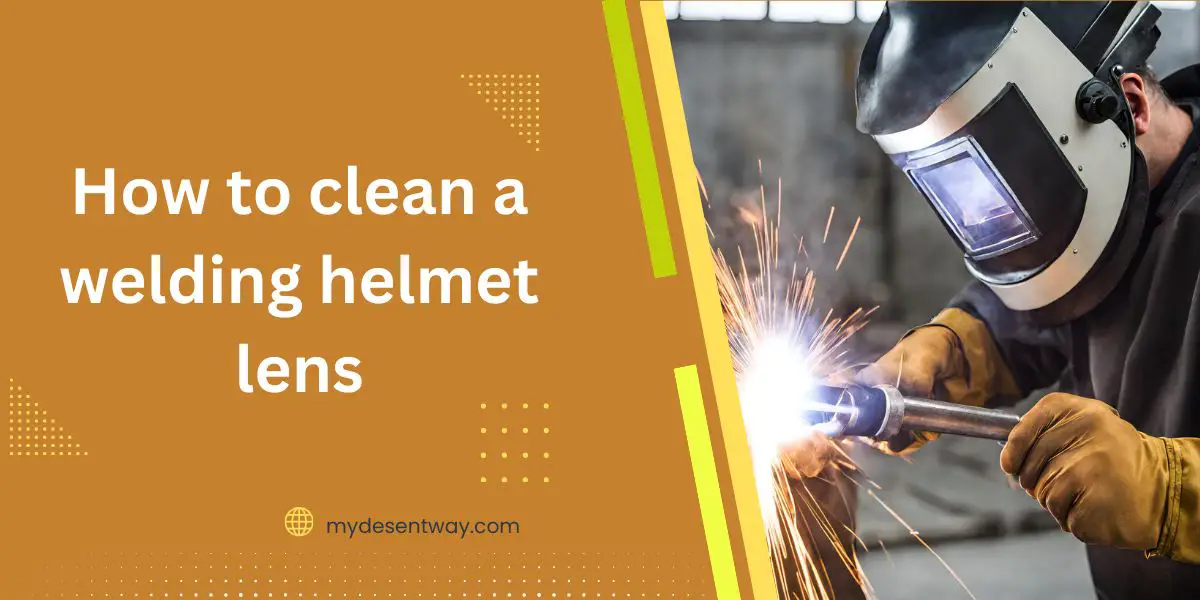
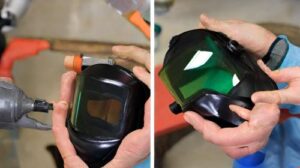
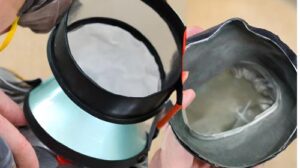
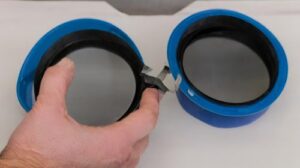
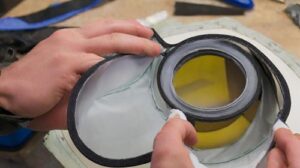
2 thoughts on “How to Clean a Welding Helmet Lens: Pro Tips Revealed”